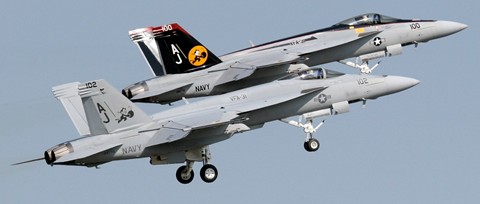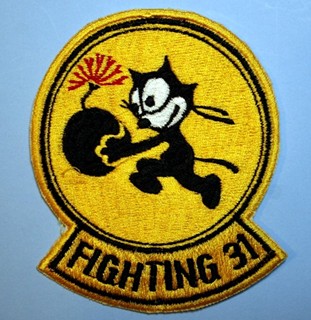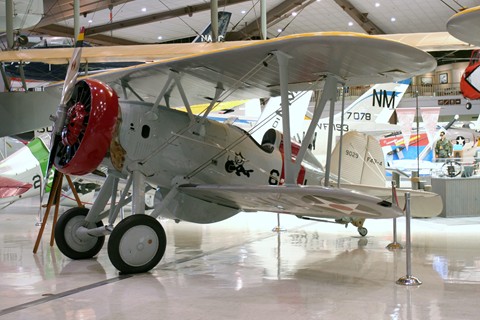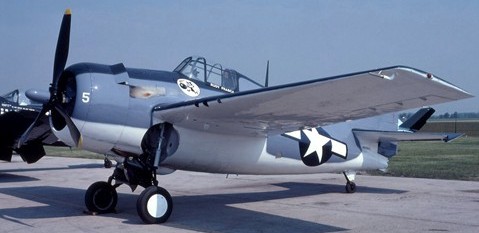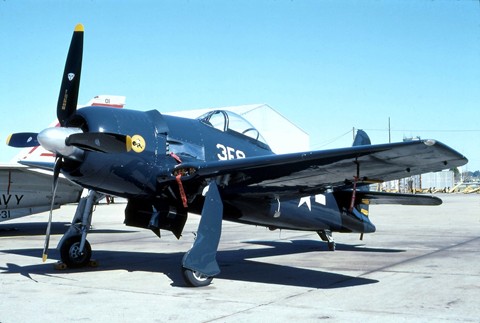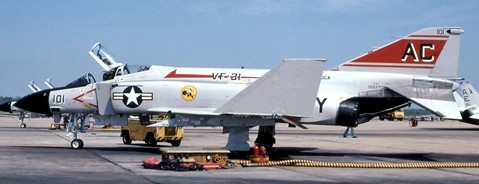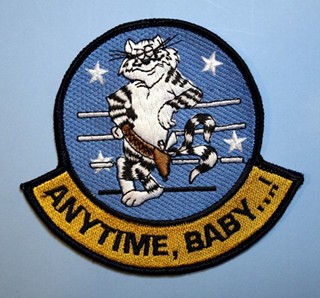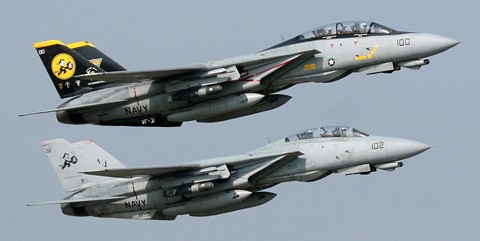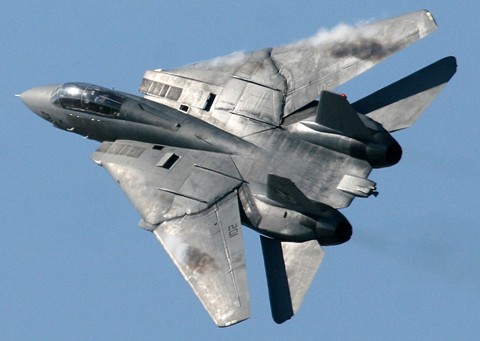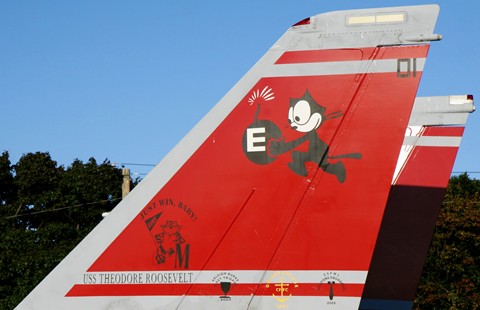|
VF-31 (VFA-31) the TomcattersVF-31, the Tomcatters, was the last active Tomcat squadron. In 2006, when the Tomcat retired, the squadron was redesignated VFA-31. The squadron is currently stationed at NAS Oceana in Virginia Beach, VA, flying the F/A-18E Super Hornet (see photo below).
VFA-31 is trying to distance itself from the Tomcat legacy by promoting itself as the Fighting 31 (see patch below).
The Early YearsVF-31 (VFA-31) is the second oldest active US Navy squadron, topped only by VF-14, the Tophatters. The squadron started out on July 1, 1935, as VF-1B, the Shooting Stars, flying the Boeing F4B. Shown below is an F4B-4 (A9029) on display at the Naval Air Museum on the grounds of NAS Pensacola. Aircraft is actually an Army P-12F restored as an F4B-4 and painted in the markings of VF-1B, who adapted the ‘Felix the Cat’ insignia.
In 1937, the squadron was redesignated VF-6 and flew the Grumman F3F-2 , which was the last biplane fighter the Navy would buy. World War IIBetween 1937 and 1943, VF-6 continued to fly the F3F-2, but as the US entered World War II the squadron took delivery of the Grumman F4F Wildcat, with its last variant bein the F4F-4. Shown below is an FM-2 (F4F) Wildcat (86746, N6290C). The FM-2 is simply a Grumman F4F built by General Motors. Photo by Horace Sagnor.
In July 1943 VF-6 swapped designations with VF-3, the Felix Cat squadron, and began flying the Grumman F6F HellcatControversy soon followed as both squadrons claimed the Felix mascot and call sign after the switch. The mascot issue resolved itself in 1946 when VF-6 was decomissioned. That same year, VF-3 became VF-3A, flying the F8F Bearcat. Photo below shows an F8F-1 Bearcat (90454, NL9G) in VF-31 markings. Snapshot was taken at NAS Oceana, in October 1990, by Horace Sagnor. This aircraft is now on display at the Kalamazoo Air Zoo in Kalamazoo, MI.
To ensure no further complications, the Chief of Naval Operations approved VF-3A as the official 'Felix' squadron. TomcattersOn August 7, 1948, VF-3A became VF-31, the Tomcatters. For almost four years, the Tomcatters flew the F9F Panther, the squadrons first jet aircraft. From 1952 to 1957, VF-31 flew the F2H Banshee. In 1957, the squadron switched to the F3H Demon, flying it through 1962. The next two years saw the Tomcatters fly the F-3B variant of the Demon before transitioning to the F-4 Phantom II in 1964. Shown below is an F-4J Phantom II (155773) from the Tomcatters, off the USS Saratoga (CVA-60). Photo taken by Horace Sagnor at NAS Oceana in May, 1978.
In 1980, the squadron and the carrier, the USS Saratoga (CV-60), concluded a 24-year period of continuous service together, the longest in naval history. F-14 TomcatIn 1981, the Tomcatters received the F-14 Tomcat and started its first cruise on board the USS John F. Kennedy (CV-67). In 1983, during its fourth cruise with 'Big John', the carrier and its air wing traveled the southern Mediterranean off the North African coast. VF-31 regularly flew over Lebanese and Syrian positions in support of multi-national peacekeeping operations.
During a mission in early December, heat seeking SAMs (Surface to Air Missiles) were launched at two F-14s. Although both Tomcats were able to return safely to the Kennedy, the incident led to US Navy retaliatory strikes. On December 4 in the Mediterranean Sea, the Kennedy and USS Independence (CV-62), launched strikes against SAM sites, losing one A-7 Corsair II and one A-6 Intruder. In 1992, VF-31 moved from NAS Oceana to NAS Miramar, CA and to the USS Carl Vinson (CVN-70). The squadron also upgraded its F-14As to the new and improved F-14Ds. Photo below taken by Horace Sagnor at NAS Oceana air show.
The stay at Miramar didn’t last very long as the Tomcatters moved back to Oceana in 1997. The squadron participated in Operation Iraqi Freedom in 2003 onboard the USS Abraham Lincoln (CVN-72), flying 585 sorties totaling 1744 flight hours. After returning from the last WESTPAC cruise for the F-14 on October 31, 2004, VF-31 returned home to NAS Oceana. As part of Carrier Air Wing (CVW) 14, the squadron was deployed on the USS John C. Stennis (CVN-74), and the squadron became the last unit to fly F-14 Tomcats with the Pacific Fleet. In 2005-2006 VF-31 transitioned to the Atlantic Fleet for the final Tomcat cruise onboard the USS Theodore Roosevelt (CVN-71) and was teamed up with VF-213, the Blacklions, also flying the F-14D.
Tomcat SunsetIn September 2006, the F-14 Tomcat was retired at NAS Oceana. The photo below of an F-14D (163904) is from that ceremonial weekend.
Last Flight OutOn October 4, 2006 the last F-14 flight (164603) commenced from NAS Oceana and ended at Republic Airport. After spending a year at the
American Airpower Museum
, the aircraft is now on public display outside Northrop Grumman headquarters in Bethpage, NY. Photos below were taken at American Airpower.
Navigation IndexReturn to the top of this VF-31 page,
|
